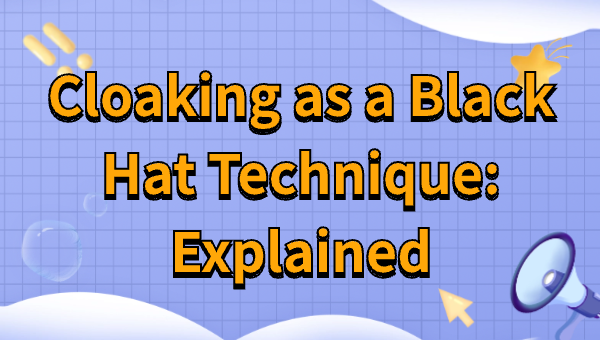Cloaking as a Black Hat Technique: Explained

In the realm of SEO, cloaking is often associated with black hat techniques, which are methods used to manipulate search engines in ways that violate their guidelines. Cloaking involves presenting different content or URLs to users and search engines, which can deceive search engine crawlers and artificially boost rankings. This article explores cloaking as a black hat SEO tactic, its risks, and why it remains a controversial subject.
What is Cloaking in SEO?
Cloaking is the practice of showing search engines one version of a webpage while displaying a different version to users. For example, a website might show keyword-stuffed content to crawlers but display user-friendly content to visitors. The goal is to rank higher for specific search terms by misleading search engines.
Why is Cloaking Considered Black Hat?
Search engines like Google explicitly prohibit cloaking because it undermines their mission to provide relevant and honest search results. Cloaking tricks the search engine into ranking a page for keywords or content that users don’t actually see. This violates webmaster guidelines and can lead to penalties, including removal from search indexes.
Common Types of Cloaking Techniques
User-Agent Cloaking: Serving different content based on the visitor’s browser or device type.
IP-Based Cloaking: Delivering different content depending on the visitor’s IP address, distinguishing bots from human users.
JavaScript Cloaking: Using scripts to alter content dynamically for crawlers.
HTTP Header Cloaking: Manipulating HTTP headers to serve different responses.
Risks of Using Cloaking
Engaging in cloaking carries significant risks, such as:
Search Engine Penalties: Websites caught cloaking may be downgraded or banned from search results.
Loss of User Trust: Visitors who discover deceptive practices may avoid the site altogether.
Negative Brand Impact: Being labeled as engaging in black hat tactics can damage reputation.
When is Cloaking Used?
Despite its risks, some marketers still use cloaking to:
Hide affiliate links or promotional content.
Bypass geographic or content restrictions.
Manipulate ad impressions or clicks.
However, these uses are generally frowned upon by search engines and can backfire.
Ethical Alternatives to Cloaking
Instead of cloaking, webmasters can focus on legitimate SEO strategies like:
Creating quality, relevant content.
Using canonical tags to manage duplicate content.
Properly implementing redirects and URL structures.
Conclusion
While cloaking may offer short-term SEO gains, it is a risky black hat technique that can lead to severe penalties and damage to your site’s reputation. Ethical SEO practices provide sustainable, long-term success. To protect your campaigns and ensure compliance, consider professional cloaking solutions that focus on transparency and security. Visit adcloaking.com for trusted cloaking technologies designed to support legitimate marketing efforts.
